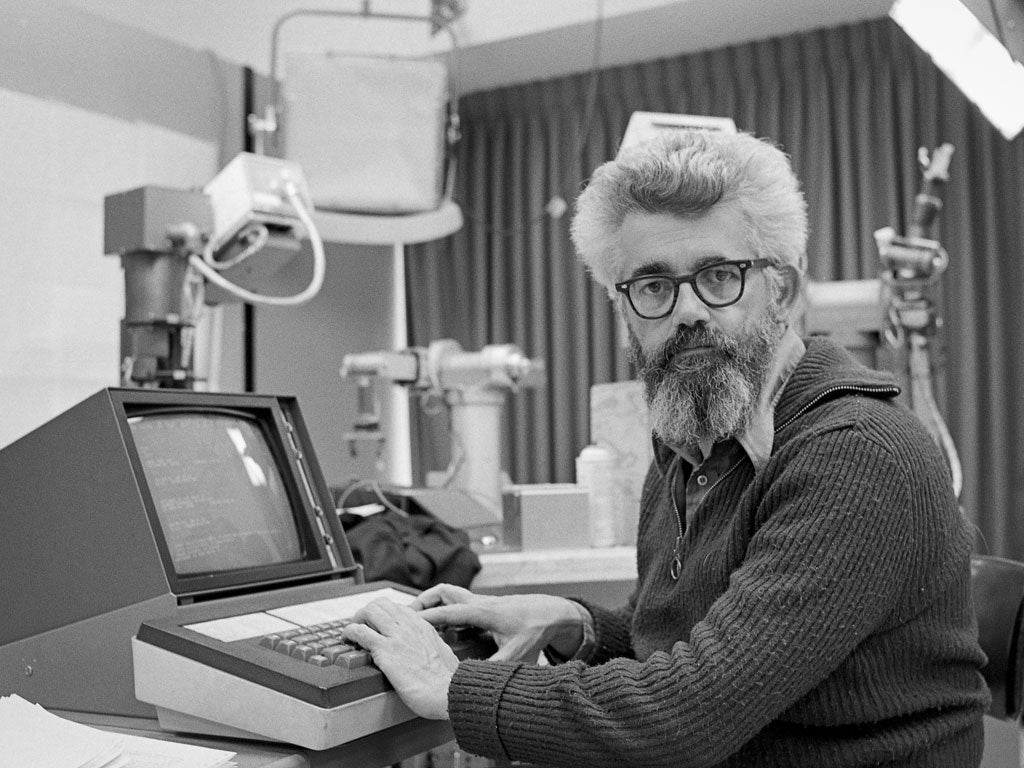John McCarthy: Computer scientist known as the father of AI

Your support helps us to tell the story
From reproductive rights to climate change to Big Tech, The Independent is on the ground when the story is developing. Whether it's investigating the financials of Elon Musk's pro-Trump PAC or producing our latest documentary, 'The A Word', which shines a light on the American women fighting for reproductive rights, we know how important it is to parse out the facts from the messaging.
At such a critical moment in US history, we need reporters on the ground. Your donation allows us to keep sending journalists to speak to both sides of the story.
The Independent is trusted by Americans across the entire political spectrum. And unlike many other quality news outlets, we choose not to lock Americans out of our reporting and analysis with paywalls. We believe quality journalism should be available to everyone, paid for by those who can afford it.
Your support makes all the difference.John McCarthy, an American computer scientist pioneer and inventor, was known as the father of Artificial Intelligence (AI) after playing a seminal role in defining the field devoted to the development of intelligent machines. The cognitive scientist coined the term in his 1955 proposal for the 1956 Dartmouth Conference, the first artificial intelligence conference. The objective was to explore ways to make a machine that could reason like a human, was capable of abstract thought, problem-solving and self-improvement. He believed that "every aspect of learning or any other feature of intelligence can in principle be so precisely described that a machine can be made to simulate it."
It would prove a challenge that eluded him and which still eludes computer designers today. McCarthy said the breakthrough might come in "five to 500 years" but never dismissed it. In 1958 he created the Lisp computer language, which became the standard AI programming language and continues to be used today, not only in robotics and other scientific applications but in a plethora of internet-based services, from credit-card fraud detection to airline scheduling; it also paved the way for voice recognition technology, including Siri, the personal assistant application on the latest iPhone 4s.
Described as "focused on the future," McCarthy was "always inventing, inventing, inventing," and in the 1960s he conceived the idea of computer time-sharing or networking, which allowed users to share data by linking to a central computer; it ultimately lowered the cost of using computers. This innovation was described as a significant contribution to the development of the internet, and a precursor of cloud computing – a method of storing data on a remote server accessible via the internet.
John McCarthy was born in Boston to Irish and Lithuanian immigrants in 1927. During the Depression the family moved many times, eventually arriving in Los Angeles, where his father was an organiser for a clothing workers' union and his mother was active in the women's suffrage movement.
Although hampered with illness, McCarthy was an exceptionally bright child. Self-taught in mathematics, he secured an undergraduate place at the esteemed California Institute of Technology, from where he graduated in 1948. After attending a symposium at on "Cerebral Mechanisms in Behaviour", his interest was ignited and so began his quest to develop machines that could think like people.
In 1951, he received his PhD in mathematics from Princeton. Via Dartmouth and MIT, he became a full professor at Stanford in 1962, where he remained until his retirement.
While at Dartmouth, McCarthy organised the ground-breaking con-ference on artificial intelligence. There, he met Marvin Minsky, who became one of the leading theorists in the field. McCarthy won a fellowship to MIT and Minsky, who was at Harvard, joined him. In 1959, they co-founded the MIT Artificial Intelligence Laboratory. However, their views began to diverge and McCarthy returned to Stanford. He quickly founded Stanford's AI Laboratory, known as SAIL, which became MIT's rival. He served as its director from 1965-1980.
During the 1960s and '70s, the Stanford lab played a pivotal role in creating the systems that mimic many human skills, including vision, listening, reasoning and movement. He sometimes showcased inventions and invited the Homebrew Computer Club, a Silicon Valley hobbyist group, to meet at the Stanford labs. The group included two of Apple's founder members, Steve Jobs and Steven Wozniak. In the 1970s, McCarthy presented a paper on buying and selling via computer, foreseeing e-commerce.
Although McCarthy was notoriously brusque, at MIT he was affectionately referred to as "Uncle John" andwas kind and generous with his time. He retired from Stanford in 1994,but continued to write and lecture,most recently on the feasibility of interstellar travel.
John McCarthy, computer scientist: born Boston, Massachusetts 4 September 1927; married firstly Martha White (marriage dissolved, two daughters), secondly Vera Watson (died 1978), thirdly Carolyn Talcott (one son); died Stanford, California 24 October 2011.
Join our commenting forum
Join thought-provoking conversations, follow other Independent readers and see their replies
Comments